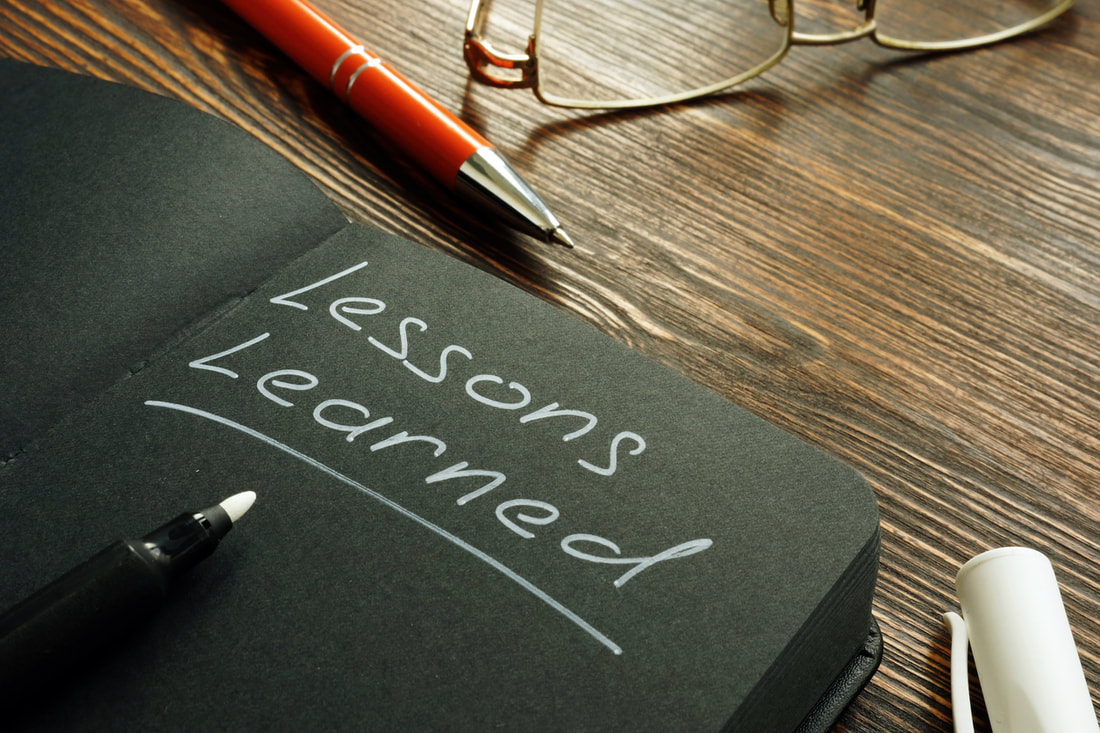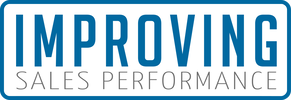 Not too long ago, I was having a conversation with one of my clients about the classes his daughter should take in college. She had just graduated from high school, and the client had just come from her graduation ceremony earlier in the week. As we were talking about her electives, the client remarked that if he had the chance to go through college all over again, he would have taken Spanish and classes on cultures and religions. That remark really piqued my interest, so I asked him why he said that. He replied that over the years he's discovered how important it is to understand others. Find out where they are coming from. This is especially important as a business owner, and someone who directly communicates with leads and clients on a daily basis. Put another way: it's vital to make a connection, and really understand people. Thinking back on his remarks, I couldn't help but frame his insight in the context of sales. If it's important for business owners in general to understand their customers, how much more critical is it for salespeople who may interact with scores of prospects every day? Help Your Lead Experience Value The fact is, successful sales is all about helping the lead experience value from your product or service. But they can’t experience value if you don't understand where they're coming from. What problems are they trying to solve? And (perhaps most importantly) why do they want to choose your solution? The reality is, they want to improve. They need to see how your solution helps them do that. Sales requires a high level of empathy and understanding. When combined with adequate research, it can often result in a win, meaning that the salesperson is right for the lead and right for your business. With that in mind, I thought of four key questions that you could ask yourself when evaluating how well you're able to understand your clients: 1. "Do I intentionally take the time to go deeper?" Understanding doesn't happen by chance. There has to be a certain level of intentionality in place for someone to achieve a deep comprehension of what drives another person. You'd probably agree with this quote: "No one listens anymore; they just wait their turn to speak." I know I've seen the truth of that statement from my years of experience in the consulting sector. It's a trend that's become more and more pronounced over the years. But it's one you have to combat if you want to gain valuable insight into a client's thoughts and feelings. I like this question because it's a good starting point for some self-reflection. If we don't go into an intake meeting or even a coaching session with the resolve to truly listen and learn, then our relationships could easily stagnate. 2. "Do I ask more questions than I make statements?" Question #1 is largely about our mindset. This question provides us with a barometer with which to measure our success at proactively working to understand others: namely, our speech. It's often been said that the reason we have two ears and one mouth is because we should do twice as much listening as speaking. How are you measuring up in that regard? Granted, talking about ourselves, our company, and our solutions is often our "comfort zone" when meeting with clients. The problem is that such an approach isn't really focused on the customer's needs -- it's focused on what we think the customer needs. In contrast, asking a lot of meaningful questions is the key to understanding what the client wants, needs, and expects from the relationship. 3. "Am I inviting?" This is a big one. Having the right mindset and asking the right questions are both helpful tools in terms of understanding your clients... but what about literally inviting them to share their perspectives? When you sincerely invite someone to explain where they're coming from, your desire to understand them is no longer implied but is apparent to everyone. In the sales context, here are some examples of invitations that you can (and that I highly recommend you do) extend to your clients:
The point is, you want to really be curious (without being meddlesome) about what makes the client tick. It doesn't matter whether you are on a phone call, a Zoom call, at a conference, a networking event, a trade show booth, or in a face-to-face meeting. Stay in the present. Be mindful of what is actually being said, rather than mentally moving on to the next point you want to make. When you invite the client to share their perspective, be sincere about it. As a salesperson, it's true that you typically have your own agenda, and you have "boxes" on your list that must be checked off. However, you'll get a lot further with your clients if you set aside the agenda, put down the to-do list, and immerse yourself in their viewpoint for a while. 4. "Do I practice being present with the people I interact with?" Finally, it's good to periodically take stock of your mindset and performance during interactions with clients (and with everyone else, for that matter). Are you listening to respond, or listening to understand? Do you focus on furthering your own argument, or on discerning why the other person is reasoning as they are? Are your interactions just items on your checklist, or are they opportunities for discovery and even joy? In summary, it's true that sales is often a "bottom-line business." The attitude is: either you hit your quota or you don't. But what a lot of salespeople seem to miss is the value of understanding in achieving those tangible goals. When you come into a meeting with an open mind, ask more questions than you make statements, literally invite the other person to share their perspective, and stay within the moment, then you're much more likely to win over the business and the hearts of your leads and clients. If you'd like more insights on how you can improve your sales leadership, contact us. Or sign up for our newsletter for more valuable resources. Karl Becker joined us for the 25th episode of Sales Gambit. Karl is a sales performance consultant, sales coach, author, and speaker who is working on a mission to improve sales organizations. In today’s episode of Sales Gambit, we are joined by Karl Becker. Karl has over 20 years of experience in the selling industry and runs a sales training firm of his own. He excels at selling high-value solutions to defined target audiences through an innovative and process-based sales methodology. He works with the vision of helping the sales team improve their sales performance.
Today, Karl joined us to talk about “How to Improve your Sales Team’s Performance?” We discuss:
 It's been said that "the most reliable way to predict the future is to create it." We could apply that to countless aspects of life. But let's focus on improving sales performance for the moment with a vital sales success tip. Wouldn't it be nice if you could not only visualize the ideal outcome for an upcoming sales meeting, client call, or coaching session, but actually work backwards to trace the steps needed to make that outcome a reality? Well, the good news is: You can. And all it takes is a relatively straightforward exercise we call the "look back." What Is the "Look Back" Exercise? The "look back" exercise has been called different things by people in different fields. For instance, in chess it's known as "retrograde analysis." Others refer to it as "inversion," or "backtracing." Whatever you want to call it, the point of the exercise is, first of all, to see yourself in the future. Visualize yourself in the event or experience that you are planning. Then, work backwards from that future point to make sure the "current" you positions yourself for success when the time arrives. "Look back" exercises enable participants to clearly identify what they need to do in the present to prepare for future wins. As an added bonus, you can do your "look back" with your sales team, or by yourself! In fact, it may be helpful to train your team on the basics of this exercise. Try it during your next sales meeting! Then, encourage each one to use it as a self-coaching tool. Why Is It important? The "look back" exercise is a critical sales success tip because it helps you connect the present with the future in a coherent, intentional way. It can remind you that a successful outcome several weeks down the road is really the result of progressive, deliberate actions taken today, tomorrow, and each day thereafter. Put another way, a "look back" session helps you to develop a workable game plan for creating the future you want. How Does It Work? In the context of sales, a "look back" exercise can be used in several ways. Again, it is inseparably connected with visualization. You're seeing the best version of your future self in that meeting, in that coaching session, or on that sales call. So the two big questions that you must answer within an effective "look back" exercise are:
As you can tell, "look back" exercises can get very deep, very fast. In the sales industry, here are two common real-world scenarios in which a "look back" may prove extremely beneficial: 1. Sales managers preparing for team meetings. If you're a sales manager preparing for an upcoming team meeting, there are a ton of different factors to consider during your "look back" session besides the basic meeting agenda. For one thing, you want to give attention to how your team members perceive you. Do you want to be seen as a coach? Are you someone who is really understanding and approachable? What outcomes would you like to see? Upon reflection, you may see the need to spend more time with certain team members in the present, so as to get them in the right mindset when the meeting day arrives. 2. Sales reps preparing for client meetings. Conducting a personal "look back" exercise can be a great preparation tool for any sales rep with a big client meeting on the horizon. Think about the kind of experience you want the client to enjoy. Do you want to position yourself as a fun, engaging guide who's ready to contribute to the client's success? Will you be able to back up your proposed solutions with hard data? What would success look like for the client? Now is the best time to anticipate questions and concerns that may come up during the conference. As a result, you can outline effective ways to address each one. And if you find yourself hitting a wall, it may be a good idea to bounce your ideas off your coach. You could even do a "practice run" ahead of time. Who Should Use "Look Back" Exercises? The short answer? Anyone who wants to be a change agent and create high-impact meetings. Of course, in the sales world this definitely includes team managers who want to achieve optimal outcomes from their meetings. It also includes customer-facing reps who want to take advantage of each interaction with prospects to help them progress through the sales funnel. "Look back" exercises can be performed on an individual basis, or as a group. In either scenario, they are great ways to create intentionality by focusing on the desired outcome, and then mapping back to the present to start taking the required steps. It can be all too easy to go through professional life hopeful of positive outcomes. However, we're often unsure of how to influence them. "Look back" exercises are invaluable because they cut through much of the uncertainty. Use a "look back" in preparation for your next meeting. As a result, you're proactively thinking about what you can do in the present moment to make the future moment a success. In other words: You're doing more than just predicting the future. You're creating it. And when it comes to improving sales performance, either individually or as a team, it's hard to top that! If you'd like more insights on how you can improve your sales leadership, contact us. Or sign up for our newsletter for more valuable resources. |
Meet Me
Archives
April 2024
Categories
All
|
|
We are headquartered in Colorado with domestic and international teammates and clients. Please use the contact form on this page to inquire about any of our books, podcasts appearances, speaking engagements and workshops, any of our offerings, or simply to connect.
|
© Improving Sales Performance. All Rights Reserved.


 RSS Feed
RSS Feed
